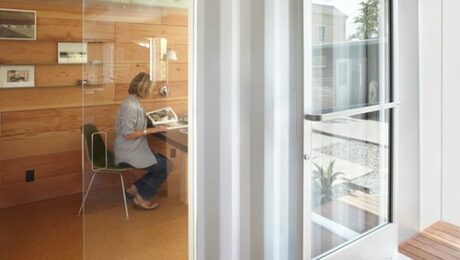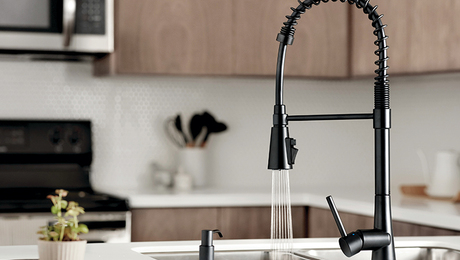House angle and solar gain
I just bought a a lot, were the street runs NE/SW in Southern Ontario. I have room to build diagonally on the lot, but wondered if it would not be better to build the house facing South East, but add equal amount of windows on the south West. In theory, this would mean one half got morning sun, the other afternoon sun and midday would be at 45 degrees to the southern corner. If it was closer to square, would this not actually offer more solar gain?
GBA Detail Library
A collection of one thousand construction details organized by climate and house part










Replies
In the 1970s we fought many battles between solar and super insulated houses. Thermal solar lost the war its ideas never proved to be practical in the real life. Super insulated has become the norm and is now required by code almost everywhere.
Consider limiting your windows to 15% of your wall area and facing the house for the best views.
When was planning my home, I modeled in in all directions and the difference in the energy usage over the full year was next to zero.
I encourage you to model your home in your climate. The model will help you select the best insulation levels and windows.
https://www.nrel.gov/buildings/beopt.html
https://www.youtube.com/playlist?list=PLHC0xDtkdjgec8QhVt7exJY3tpSLEFk-d
Walta
Thanks Walta, I will try this !
Turning the house southeast by about 10 degrees would help with morning light but putting a lot of glass on the southwest facade would cause overheating.
Make sure to do an overhang calculation for the south facing glass but your only choice for the west facing glass are trees for shade in the summer (the angle of the setting sun is too low for overhangs to be practical).
You can use this free online overhang calculator.
https://susdesign.com/overhang/
This is not a simple question. There is almost no place where people live where solar gain is unambiguously beneficial. Generally you want it in the heating season but not in the cooling season. The problem is the path of the sun isn't aligned with the seasons, the sun follows the same path in April as in August.
I agree with Walta -- if you're not modeling, you're guessing. I also agree that you'll probably find it has little effect on overall energy usage.
bloemie,
I'm not sure that orienting a building to maximize solar efficiency over other values - like maintaining a consistent streetscape, situating the house to maximize privacy or views, or to create pleasant adjacent outdoor space - should be your chief priority. It's simply not important enough.
On aspect that could make a difference is considering roof area available for solar PV cells, and the orientation of those roofs. You also want to absolutely minimize penetrations in those areas. The NREL site PVWatts https://pvwatts.nrel.gov/ provides a very easy-to-use tool for exploring roof pitches, orientation, and other details.
As an aside, we have a friend that designed to capitalize on early-day (eastern) solar - the time when you most likely want heat - and it's worked very well for them. They have a low-mass area that heats very quickly, has controllable ventilation to the main living area, and has little exposure to late-day sun. It's a clever design for areas with a wide daily temperature range.
I agree that your effort is better spent optimizing the roof for solar panels.
Interesting! Put it at 45 degrees (225 azimuth or 135 azimuth) so SW or SE facing and I only loose 211 kw a year (all else standard for my location.) 20kw though in December. Now if solar gain works the same way, as PV panels, thats not much at all.
The difference is that with solar panels more is always better. With solar gain, you want it when you need it, and don't want it when you don't need it.
But run the numbers.
You might also find that orienting the panels southwest or southeast is more beneficial depending on your utilities Solar programs. A set of east/west panels will get less watts per sqft of array, but have a much longer active period during the day. Adding panels is cheap. With a split East/West system, you could have 10kw worth of panels on a 4-5kw inverter, so the extra cost is only in panels.
Outside of solar gain, having some southern windows is nice to get sunlight in the house all day. Our current house has bedrooms on the south end of the house, so we don't get a ton of sunlight in the living room/kitchen.
From the perspective of natural light on the interior I would encourage the southeast/southwest orientation. Place spaces you use in the morning (bedrooms and kitchen) southeast facing, and living/dining facing southwest.
Then provide a bit of thoughtful shading to block the worst of the summer sun on the southwest side.
The result will be plenty of comfortable natural illumination all throughout the day.
As I wrote this I thought I'd see if I could quickly sketch out a simple house plan following these guidelines. I've attached it for your amusement. It ticks all the boxes. The kitchen and bedrooms get morning light. The porch at the west provides pleasant outdoor living space on summer evenings while protecting the interior from the late afternoon sun. The garage and utility spaces are to the north, blocking the worst of the weather and there's a back porch into the mudroom for when you don't want to come inside with your muddy boots. Conditioned floor area is about 1100 sq. ft.
It was a fun exercise. I hope it gives you ideas.
In “The Natural House” Frank LLoyd Wright wrote, “the house should be set 30-60 to the south” -- that the ideal orientation of a building for catching the sun was to have all walls at either 60 or 30 degrees to south. When he started a plan he would take a 30-60-90 triangle, orient it so that the hypotenuse was pointed north, and sketch all of the walls with the legs. Falling Water is oriented this way.
Wright was lousy on building science -- his intuition was usually 180 degrees to the science -- but he knew a thing or two about aesthetics.
That was fun! I have a copy of The Natural House but it's been ages since I've looked at it. Thanks for the reminder.
I got to visit Fallingwater for the first time last year and found it even more beautiful (and livable) than it appears in photos. I also visited his smaller Kentuck Knob, which is just down the road and found it equally lovely.
Maybe in your case it would be useful to revise the information on monthly on module irradiation and insolation available for different module mounting angles so that you can plan how effective and feasible different solutions would be. For example, one of the interesting resources I know: https://atsea.fi/
I know they provide all these info and plots specifically for your location, so it should be quite convenient for planning
Otherwise, I agree with some other participants, it will be difficult to answer this kind of question